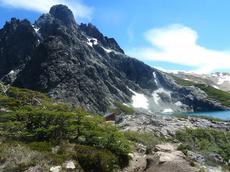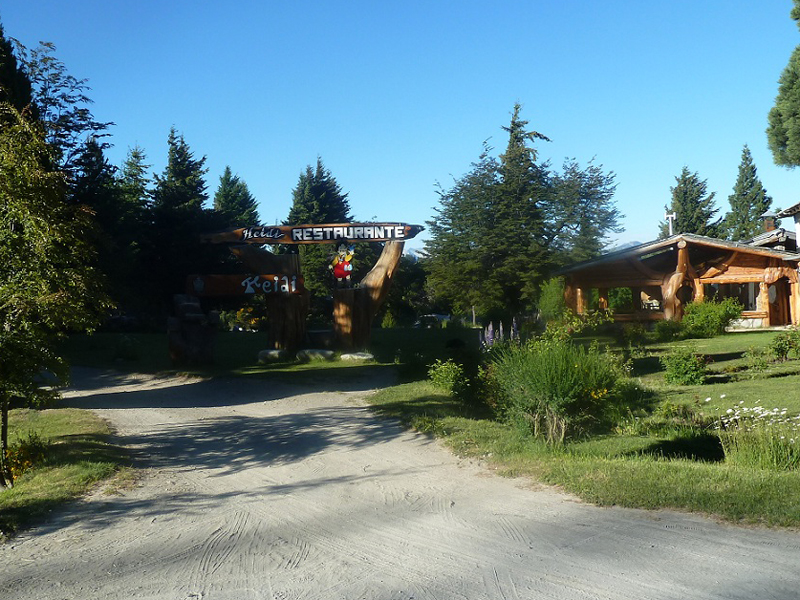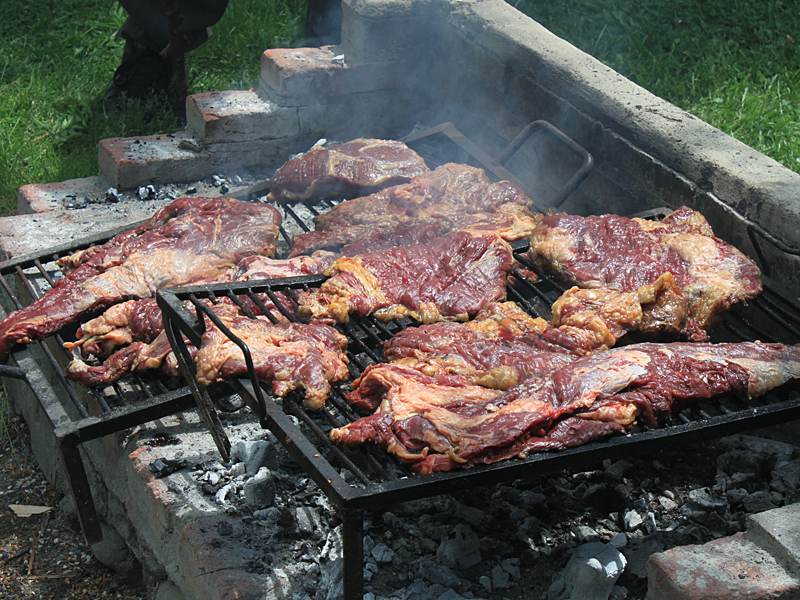From fondue to asado
Marlen Müller made the very most of a brief break from her internship to travel into the Argentine Alps. The only things missing compared to their European counterparts were the well-signposted trails and accurate bus timetables.

When I was given a week off (my supervisor: “Si, si, enjoy Argentina!”), I decided to go to San Carlos de Bariloche with my roommate. After a twenty-hour bus ride through endless steppes, steep ridges and bizarre rocks towering into the sky, it was all truly worth it for the glimpse of the wonderful lakelands of Nahuel Huapi National Park and surrounding 2,000-metre peaks of San Carlos de Bariloche – a little slice of Switzerland on the other side of the world.
Zurich’s cantonal flag flutters on a line in front of me between that of Zug and Lucerne in the Colonia Suiza – the Swiss village near San Carlos de Bariloche at the foothills of the Andes in Patagonia, right in the heart of Argentina. You can even have queso fondue por dos personas (cheese fondue for two) for just ARS 95 (about CHF 21) – today’s special and the cheapest cheese fondue I have ever had! When I order a coke in a restaurant, they respond in German. At the end of the nineteenth century, Swiss families settled down here from Valais, bringing their traditions with them. While my friend and I wait for the bus to take us back into the centre of San Carlos de Bariloche, I have a closer look at the buildings in the area. It’s a microcosm of Switzerland – from the hotel “Heidi” to the “Tirol” – and I’m sure you can enjoy a homemade strudel for dessert in the many cafés and restaurants.
But it is not just the buildings and food that remind you of Switzerland and Austria; the surrounding mountains, lakes and meadows are also highly reminiscent of the view from Rigi-Kulm and co. However, you won’t find the well-developed and carefully signposted trails or bus timetables that are always bang on time; everything is more primordial and spacious than in Switzerland and I am glad that I have someone with me who knows her way around.
A business dinner with a large hunk of meat
Together with the team from Buenos Aires, my research group recently organised a business dinner to have an exchange. We opted for the typical asado, a large hunk of beef with some salad and chips, in a parilla (steakhouse). The others filled us in on the poor conditions at public universities. Particularly for first-semester courses, the lecture theatres are overcrowded and the level of hygiene leaves a lot to be desired. Argentinean universities have no entry restrictions; anyone can enrol for any subject. While this does guarantee people having the same opportunities, the academic infrastructure is not equipped well enough. However, things are looking up at the moment. Only recently, the government announced that more public funds are to be channelled into research in future. Under President Kirchner, who was sworn in back in November, Argentinean research is experiencing an upswing.
Other topics were how much I liked Argentina and how expensive local meat has become – very scientific! My colleagues told me that a big asado, as was common until only recently, is no longer everyone’s cup of tea. Instead, people content themselves with cheaper alternatives like chicken (pollo). They only have asado on special occasions nowadays, such as birthdays, on Sundays or for scientific exchanges!
Oktoberfest culture in La Plata
A colleague
of mine who is doing a German course (she was in Düsseldorf for two days at a
conference and immediately became fascinated by the German language!) recently
invited me to the “Beer Festival” at the German Institute at the Universidad
Nacional de La Plata. I was greeted with an Oktoberfest atmosphere and
après-ski hits, and we drank beer out of Munich Oktoberfest tankards. I must
have been the only “true” German at the party, judging by how often I was called
upon to sing German karaoke songs. Two hours later, most of the guests had
headaches from Rammstein and the Toten Hosen, so they put on some salsa and
Argentinean pop. That’s when everyone really started to swing their hips – back
to the roots!
About the author
Marlen Müller (25) is studying Computational Biology and Bioinformatics at ETH Zurich. She is currently doing an internship at the university in La Plata, Buenos Aires Province, which she opted to do off her own bat to experience a different culture and improve her Spanish skills. The internship lasts until the end of December 2011.












READER COMMENTS